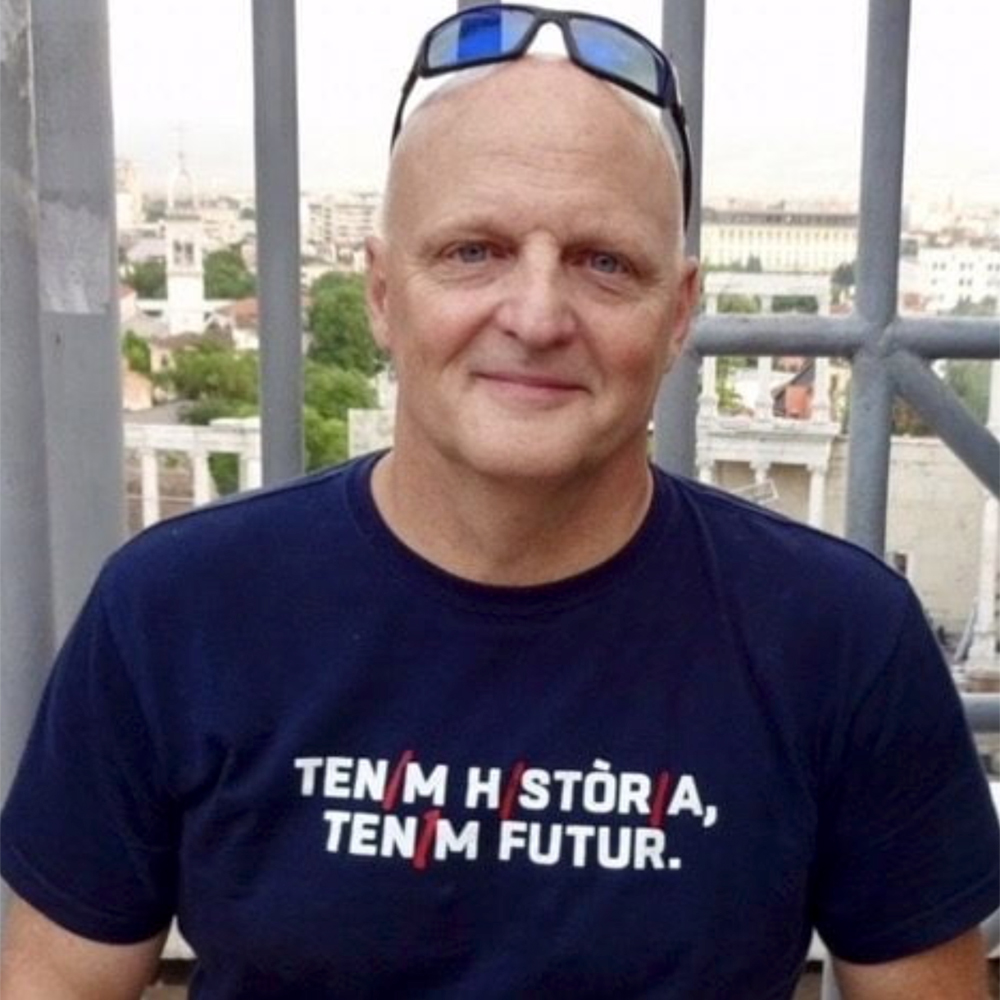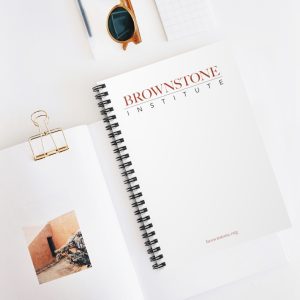The 1970s marked an important turning point in the history of Western democracies. Having led their populations to the obscene carnage of World War II in reaction to Nazi aggression, the elites of North America and their non-communist European subjects understood — above all, for pragmatic reasons linked to the need to rebuild markets and industries — that it was in their interest to provide ordinary citizens of their societies with social and democratic rights and privileges seldom, if ever, seen in the history of humankind.
The effort was, for the most part, an enormous success. And therein lay precisely the problem: the masses who had grown up during the three decades following the war did not understand that the economic and governmental elites had no intention of allowing the regimes of supervised democracy of those years to evolve, over time, into true receptacles of the popular will.
The masses’ inability to comprehend the implicit limits on their political agency was not a new problem. What was new were the restrictions on elite manoeuvrability imposed by the reality of the Cold War in this historical moment.
How could the elites resort to overwhelming violence, as they had traditionally done, to crush youthful rebellions in areas under their control when heavy-handedness of this type was precisely what they were criticizing day after day in their anti-communist propaganda?
An answer to the dilemma began to emerge in 1970s Italy with the so-called ‘Strategy of Tension’. The method is as simple as it is diabolical and depends on the following reasoning: no matter how sclerotic, corrupt and discredited the existing regime of supervised democracy might be, people will seek refuge within its structures (thus giving those structures an instant dose of added legitimacy) when confronted with a generalized rise in levels of social fear.
How is this accomplished?
By planning and executing from the within government (or through non-governmental actors operating with the approval of key governmental factions) violent attacks against the population and attributing them to official enemies of the regime of supervised democracy.
And when the expected panic occurs (a panic magnified, of course, by the many allies of the managed democracy in the press), the government puts itself forth as the beneficent protector of the lives of the citizenry.
Sound nutty, like a far out “conspiracy theory”? It is not.
What I have just explained – perhaps best exemplified by the terrorist attack on the Bologna railway station in 1980 – is extremely well- documented.
The mystery is why so few people are familiar with these state crimes against the their populations. Is it a matter of fact-suppression by the big media?
Or the reluctance of citizens themselves to grapple with the fact their rulers might be capable of such things? Or maybe both things simultaneously?
Once the ‘democratic’ challenges of the 1960s and 1970s were neutralized—in part by the ultra-cynical methods mentioned above, and in part by the strategic flaccidness of the activists themselves — the economic elites of the United States and its junior partners in Europe galloped as never before, consolidating during 80s and 90s a level of control over the Western political class that would have been absolutely unthinkable in the first three decades of the post-war era.
The growing divide between the economic elites and the large mass of the population that resulted from these changes was hidden during the 1990s by, among other things, by the cyber revolution (with its corresponding financial bubbles and quotas of mental distraction) and by the enthusiasm arising from the collapse of communism and the apparent consolidation of the European Union.
But if there is one thing that elites — be they financial, clerical, or military — have always understood, it is that no system of ideological control lasts forever. And even less so in the age of consumerism, characterized, as Bauman reminds us, by the compulsive search for new future sensations, on the one hand, and rampant forgetfulness, on the other.
In this new, more ‘liquid’ context, a single terrifying event—such as the government-approved Bologna massacre—has a much more limited domesticating effect than before.
Why?
Because, in an environment dominated by forgetting and the headlong search for new and different consumerist sensations, the ‘disciplinary’ effects of a singular shock to the social system will endure for a much more limited time within the brain of the average citizen.
And it was in this context, in the late 1990s, that the strategists of the United States and its European servants, collaborating in the context of their well-financed ‘Atlanticist’ networks, began to adapt their “perception management” tactics to the new cultural reality.
How?
By turning consumerism’s obligatory forgetfulness, which they had initially viewed as a hindrance to the process of imposing social discipline, into their great ally.
Now instead of administering small shocks of limited temporal effect upon the citizenry, they would create (or give implicit consent for others in their trust to create) large social disruptions, the disorienting effects of which would extended sine die through the well-spaced application of smaller shocks.
Indeed, they wanted to put into practice what seemed unreal and absolutely dystopian when Guy Debord described it in 1967: an all-enveloping and energy-draining spectacle that remains constant in terms of the amount of social space it occupies, while regularly changing its plastic, visual and verbal forms…a spectacle that for all its omnipresence in the minds of the populace, often has only a very tenuous relationship the empirical material reality of their day-to-day lives.
When, during the last decade of the 20th century, talk began in Atlanticist military and intelligence circles of ‘Full-spectrum dominance’, most observers understood it mainly in terms of classical military capabilities. That is, the ability of the US and NATO to physically destroy the enemy in the widest possible variety of situations.
However, over time, it has become clear that the most dramatic progress made under this doctrine is in the field of information control and “perception management”.
I do not claim to understand all the operational realities behind the attacks on the Twin Towers in 2001. What I am sure of, however, is that the spectacle organized in reaction to these acts of destruction was by no means spontaneous or improvised.
The most obvious proof of is that just six weeks after the attacks, the US Congress passed the Patriot Act, a 342-page piece of legislation which was nothing more and nothing less than a compendium of all the curbs on basic civil rights that the harshest elements of the US deep state had been dreaming about enacting for several decades.
The careful observer of the country’s information environment will find many more indicators of a surprising degree of coordination in the media treatment of the 2001 attacks, a pattern of behaviors that we might do well to reacquaint ourselves with as we try and make sense of the COVID phenomenon.
Below some of the more salient features of the spectacle that was generated in response to the attacks that took place in New York nearly two decades ago.
1. The very and early constant repetition in the media that the attack was an absolutely ‘unprecedented’ phenomenon in the history of the country, and quite possibly in the world.
Those of us who study history know that there are very few occurrences that cannot be compared to others in the past, and that, moreover, it is precisely this practice of making transtemporal analogies that endows history with its great social value.
Without this ability to compare, we would always find ourselves trapped in the emotional sensations and pains of the present, without the ability to relativize what is happening to us, which, of course, is essential if we want to react to life’s difficulties with wisdom and proportion.
On the other hand, who might profit by having citizens living in a timeless bubble of trauma, convinced that no one else in history has suffered in ways they are currently suffering? I think the answer is obvious.
2. The constant repetition in the media, from the first moment following the attacks, that this day would ‘change everything’.
How can we know in the first moment following that this event or any other that our lives will be fundamentally and inexorably changed? In addition to being very complex and full of surprises, life is also us and our combined will to shape it. And while there is no doubt that we have never had absolute control over the fate of our collective life, we have also never been mere spectators in its development.
That is, unless and until we decide to relinquish that responsibility. In whose interest is it to induce in us a feeling of futility and/or a lack of agency regarding the future? Who benefits by convincing us that we will not be able to sustain or recover long-cherished elements our lives? In whose interest is it that we abandon the idea that we can be something more than mere spectators in the drama before us? I suspect it is someone other than most of us.
3. TINA or ‘There is no alternative’.
When a country, especially a very rich country with many tentacles in global business and world-wide institutions, is attacked, it has many tools at its disposal and, therefore, many ways to react to the event.
For example, had it wanted to, the US could have easily used the events of September 11th to showcase how justice could be achieved through cooperation between judicial and police forces from countries around the world, a position that had numerous eloquent adherents within the country and abroad.
But none of them appeared on the screens of the nation’s viewers. No, from the outset, the media spoke relentlessly, not about the moral and strategic advantages or disadvantages of a military attack, but about its impending operational details.
That is, almost from the moment the towers fell, commentators spoke of a massive military attack on ‘someone’, with the same naturalness one uses to observe that the sun rises in the morning. We were told constantly, in large and small ways, that there was no alternative to this plan of action.
4. Create a body of television commentators who, with very slight variations in style, political affiliation and policy proposals, subscribe to all the basic assumptions mentioned above.
In fact, when a careful study of these pundits is done, we find frankly terrifying levels of organizational inbreeding are seen among them. As Thomas Friedman, one of the best-known members of this gang of ‘experts’ said in an unguarded moment of candor in a conversation with Israeli journalist Ari Shavit in 2003:
I could give you the names of 25 people (all of whom are at this moment within a five-block radius of this office) who, if you had exiled them to a desert island a year and a half ago, the Iraq war would not have happened.”
It was only members of this group, or their designated spokespersons, who had the ‘right’ to explain the ‘reality’ of the post-9/11 crisis to the country’s citizens.
5. To create, with the full indulgence of the big media, a regime of public punishment for those who were contrary to the prescriptions of the small group of neocon experts mentioned above.
For example, when Susan Sontag, perhaps the most notable female American intellectual of the second half of the twentieth century, wrote an article harshly criticizing the US government’s violent and clearly disproportionate reaction to the attacks, she was severely reprimanded and shamed throughout the media.
A little later, Phil Donahue, whose talk show boasted MSNBC’s highest audience share at the time, was fired for having invited too many people with anti-war views to his program. This is last statement is not speculation. It was made clear in an internal company document leaked to the press shortly after he lost his job.
6. The constant seamless and non-sensical substitution of one supposedly important “reality” for another.
What was officially an attack by a group of Saudis became a pretext for the invasion of Afghanistan, and then Iraq. Extremely logical, right? Obviously not.
But it is also obvious that the authorities understood (in fact, the so-called brain of Bush, Karl Rove, boasted a posteriori of his ability to invent realities and have them amplified by the press) that under the influence of the “continuous spectacle”, with its constant dance of images designed to induce amnesia and psychological dislocation, the task of complying with the basic postulates of logic is a decidedly secondary requirement
7. The invention and repeated deployment of what Levi-Straus called ‘floating” or “empty” signifiers — emotionally evocative terms presented without the contextual armature needed to for us to imbue them with any stable and unequivocal semantic value — designed to spread and sustain panic in society.
The classic examples of this were the constant mentions of WMDs and terror warnings in form of a multicolored thermometers with various ‘temperatures’ of risk generated by Homeland Security beginning — what a coincidence — precisely at the moment the original psychological shock of the 9-11 attacks was beginning to fade.
An attack where? By whom? A threat according to what sources? We were never clearly told.
And that was precisely the point: to keep us vaguely frightened, and therefore much more willing to accept any security measures imposed by our ‘protective parents’ in government.
Might there be a relationship between set of propaganda techniques I have just sketched out and the spectacle currently being generated in relation to the COVID-19 phenomenon?
I can’t be sure. But in the interest of stimulating a more in-depth analysis of the subject, I will pose a few questions.
Is COVID-19 really an unprecedented threat when we consider, for example, the death tolls of Asian Flu of 1957 or the Hong Kong Flu of 1967-68?
We can really say, in light of the levels of mortality in many countries of the world in recent months, that, as has been said constantly since the beginning of the crisis, that COVID 19 is virus against which human bodies have no known defense, and before which, therefore, the classic solution of herd immunity has no validity?
Why should everything change with this epidemic? Epidemics have been a constant companion of human beings throughout their history on Earth. If the epidemics of 1918, 1957 and 1967-68 did not ‘change everything’, why should is be the case this time? Could it simply be that there are very large centers of power that, for reason of their own, might want “everything to change” this time around?
Do you really think it is a mere coincidence that, in a world where pharmaceutical companies move obscene amounts of money, and where the WHO and the GAVI depend almost entirely for funding on the money of a man obsessed with creating mass vaccination programs, the corporate media has systematically “forgotten” about the millennial human capacity to create defenses against new viruses? And that nearly all public discussions of solutions revolve — in true TINA (There Is No Alternative) fashion — exclusively around the development of a vaccine?
Do you really think that your media has allowed you to hear a wide range of expert opinions on how to respond to the epidemic?
There are quite a few scientists of great prestige around the world in the world who, from the beginning have made clear that they do not accept the notion that COVID represents an ‘unprecedented’ threat to human beings not that this virus, unlike the vast majority of others in world history, cannot be defeated by the herd immunity.
Do you find it strange that none of these people are regularly asked to appear in big media? Have you examined the possible links to, and possible financial dependency upon, WHO, GAVI and other pro-vaccine entities among those most frequently appearing in the media?
Do you think it is a mere coincidence that Sweden, which did not yield to the enormous pressure to curtail the basic freedoms of its citizens over COVID, and which has had per capita mortality levels below Italy, Spain , France, the UK and Belgium, has it been the constant target of criticism from prestigious media, starting with The New York Times?
Do you find it at all odd that the head of the anti-COVID effort in that country, Anders Tegnell, has been the subject of very aggressive interrogations in his contacts with journalists? While the walking epidemiological disasters, and cheerful destroyers of fundamental rights like Fernando Simón (Spain’s chief adviser on the epidemic), and other similar authoritarian arsonists (e.g., Governor Cuomo of New York State) are always treated with docile respect by the same scribes?
Does it seem normal to you that, in a dramatic reversal of historically predominant moral logic, the press harshly questions those who most want to preserve the social fabric and the existing rhythms of life while they lionize those who most seek to disrupt it?
Does it not seem a bit strange to you that the original pretext for cutting the in the fundamental rights of citizens — reducing the curve of infections so as not to overload the health system — disappeared suddenly and without a trace from our public discourse only to be replaced, as death rates were steadily falling, with the journalistic obsession with the number of ‘new cases’?
Does it seem at all odd that no one now remembers or talks about the fact that many experts, including Fauci and the WHO before June 12, spoke about on essential uselessness of mask-wearing in relation to a virus like this?
Do you find it strange that almost no one talks about the report by the BBC’s Deb Cohen report which says that the WHO changed the recommendation on masks in June under heavy political pressure?
Or that no one in American media will talk about how Sweden and the Netherlands, two countries known for the exceptional health care systems, have come out clearly and ambiguously against mandated mask-wearing in public?
Have you considered the possibility that the term ‘case’ may be a floating or empty sign par excellence, in the sense that the media seldom, if ever, provide us the contextual information we need to turn it into a meaningful indicator of the real dangers we face with the virus?
If you accept the premise, which as we said before is eminently debatable, that COVID-19 is not like any other virus in human history and therefore the only way we have to eradicate it is with a vaccine, then increase in “cases” is clearly bad news.
But what if, as many prestigious experts who have not been able to appear in the major media think, the concept of herd immunity is perfectly applicable to the phenomenon of COVID-19?
In this context, an increase in cases, combined with a steady decline in the number of deaths at the same time (the reality, in the vast majority of countries in the world today), is, in fact, very good news.
Don’t you find it strange that this possibility is not even mentioned in the media?
Beyond that, there is the indisputable fact that the vast number of those infected with COVID-19 are not in any mortal danger whatsoever.
That is not just my opinion. It is the opinion of Chris Whitty, Chief Medical Officer for England, Chief Medical Adviser to the UK Government, Chief Scientific Adviser at the Department of Health and Social Care (UK) and Head of the National Institute for Health Research (UK) who, on May 11th, said of the virus:
The great majority of the people will not die from it….. Most people, uh well, a significant proportion of people, will not get this virus at all at any point in the epidemic which is going to go on for a long period of time.
Of those that do, some of them will get the virus without even knowing it, they will have a virus with no symptoms at all, asymptomatic carriage. Of those that get symptoms, the great majority, probably 80 per cent, will have mild or moderate disease. It might be bad enough for them to go to bed for a few days, not bad enough for them to go to the doctor.
An unfortunate minority will have to go as far as hospital. The majority of them will just need oxygen and then leave hospital. And then a minority of those will have to go to severe and critical care. And some of those, sadly, will die. But that’s a minority, one percent, or possibly even less than one percent overall.
And even in the highest risk group, this is significantly less than 20 percent, i.e. the great majority of the people, even the very highest groups, if they catch this virus will not die. And I really wanted to make that point really clearly.
Unfortunately, there are many people, including some that see themselves as quite sophisticated, who, immersed in the consumptive logic of the spectacle, still think that what the US leadership class did after 9/11 attacks was a spontaneous and logical reaction to the acts committed by terrorists that had nothing to do achieve long-established goals of the country’s deep state.
Similarly, there are many people, including local and state politicians of good will, who today think that what is being done in reactions the COVID-19 phenomenon is rooted a sincere and pure desire to save the country from a life-threatening disease.
Observing this latter group, one can only conclude that deep within the secular culture that most of these people subscribe to, there exist religious impulse that is every bit as strong as that which existed in the supposedly primitive cultures of yesteryear.
Reprinted with author permission from Off-Guardian
Join the conversation:

Published under a Creative Commons Attribution 4.0 International License
For reprints, please set the canonical link back to the original Brownstone Institute Article and Author.









